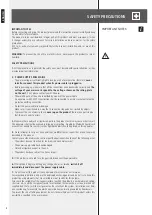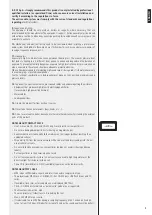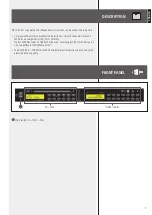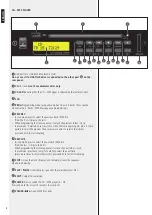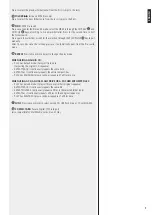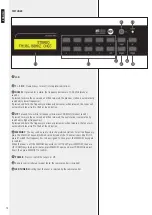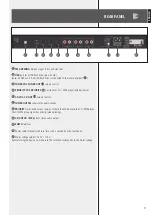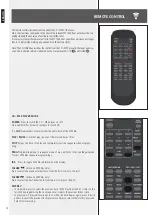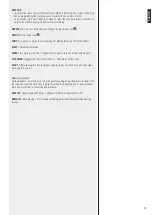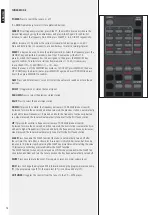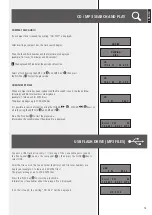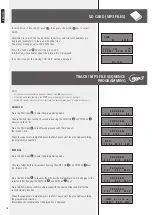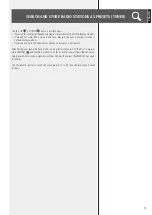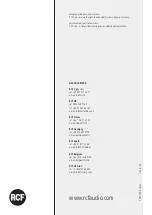
5
ENGLISH
8.
RCF S.p.A. strongly recommends this product is only installed by professional
qualified installers (or specialised firms) who can ensure correct installation and
certify it according to the regulations in force.
The entire audio system must comply with the current standards and regulations
regarding
electrical systems.
9.
Supports and trolleys
The equipment should be only used on trolleys or supports, where necessary, that are
recommended by the manufacturer. The equipment / support / trolley assembly must be moved
with extreme caution. Sudden stops, excessive pushing force and uneven floors may cause the
assembly to overturn.
10.
Mechanical and electrical factors need to be considered when installing a professional
audio system (in addition to those which are strictly acoustic, such as sound pressure, angles of
coverage, frequency response, etc.).
11.
Hearing loss
Exposure to high sound levels can cause permanent hearing loss. The acoustic pressure level
that leads to hearing loss is different from person to person and depends on the duration of
exposure. To prevent potentially dangerous exposure to high levels of acoustic pressure, anyone
who is exposed to these levels should use adequate protection devices.
When a transducer capable of producing high sound levels is being used, it is therefore necessary
to wear ear plugs or protective earphones.
See the technical specifications in loudspeaker user manuals to know their maximum sound
pressure levels.
12.
To prevent the occurrence of noise, use screened cables only and avoid putting them close to:
-
Equipment that produces high-intensity electromagnetic fields
(for example, high power transformers)
-
Mains cables
-
Loudspeaker lines.
13.
Situate this product far from any heat sources.
14.
Never force the control elements (keys, knobs, etc…).
15.
Do not use solvents, alcohol, benzene or other volatile substances for cleaning the external
parts of this product.
NOTES ABOUT COMPACT DISCS
-
Use 12 cm audio CD, CD-R and CD-RW only. Never insert 8 cm compact discs!
-
Do not use damaged compact discs (or having an irregular shape).
-
Keep compact discs clean and hold them always on their edges (without touching their
unlabeled surface).
-
Wipe a dirty CD from the centre outward with a clean soft and dry cleaning cloth. Do not
use alcohol or solvents.
-
Do not attach adhesive labels on compact discs (and do not use discs having adhesive
labels).
-
Put compact discs in their cases when not used.
-
Do not leave compact discs close to heat sources, exposed to high temperatures or the
direct sunlight (for instance, inside a car).
-
Some CD-R (recordable) / CD-RW (rewritable) types may not be read correctly.
NOTES ABOUT MP3 FILES
-
MP3: means MPEG Audio Layer 3 and refers to an audio compression type.
-
This player reads MP3 files on CD-ROM, CD-R or CD-RW discs, USB flash drives and SD
cards.
-
If available, track titles, artists and albums are displayed (ID3 TAG).
-
CD-R – CD-RW discs formatted as ‘packet write’ mode are not supported.
-
The file extension must be .mp3 .
-
The max. directory (/ folder) level is 8, including the ‘root’.
-
Max. 2000 MP3 files per source.
-
It is advisable to use MP3 files having a sampling frequency of 44.1 kHz and a fixed bit-
rate of at least 128 kbps (if higher, for instance 192 kbps, the sound quality will be better).
CLASS 1
LASER PRODUCT


